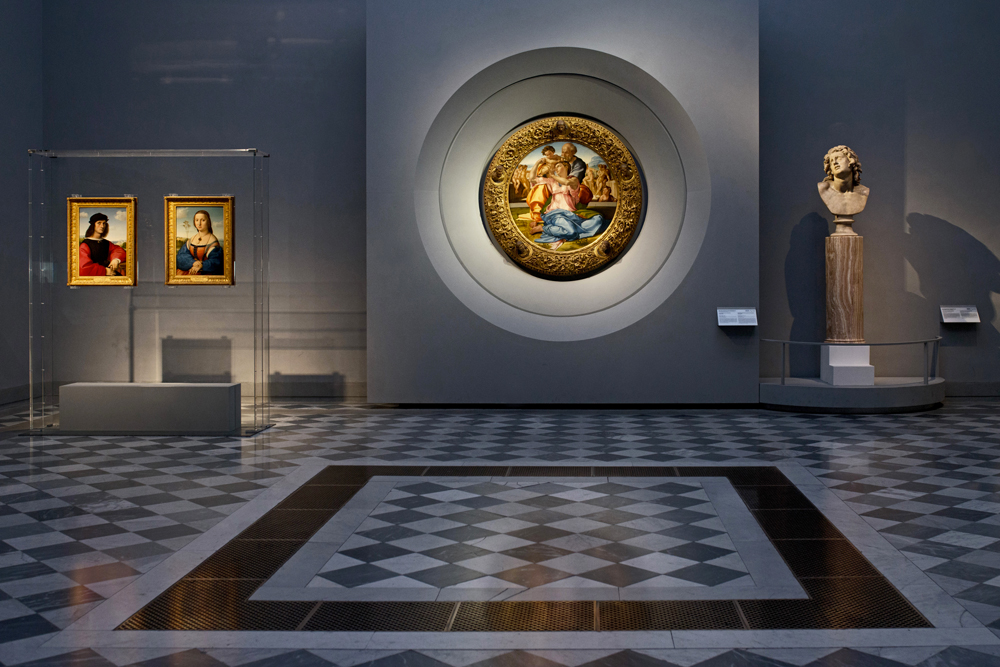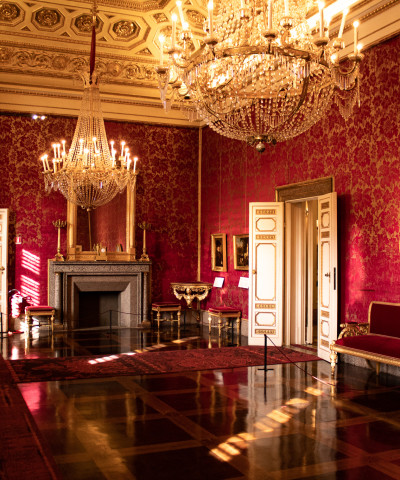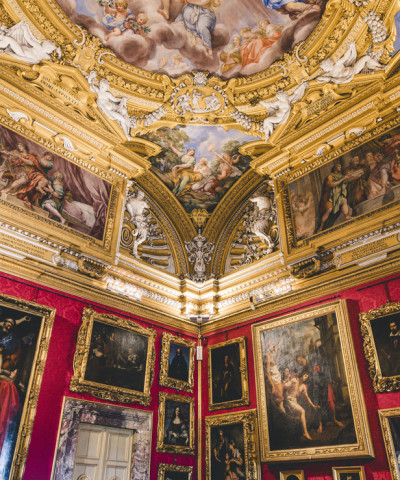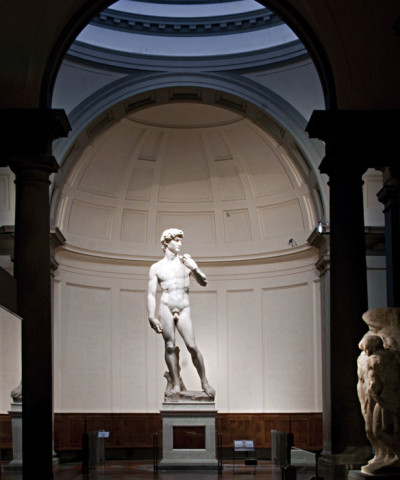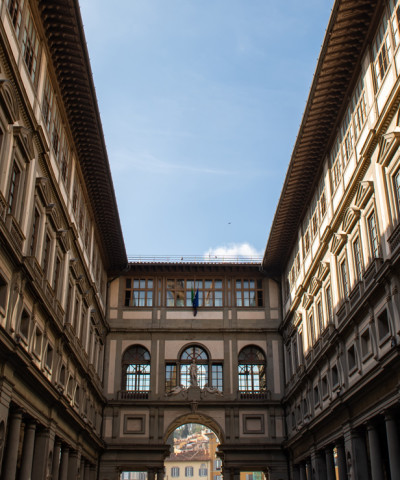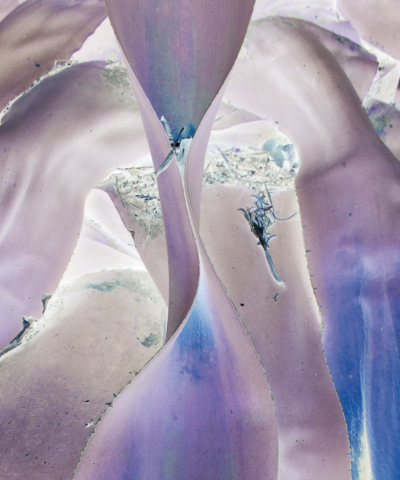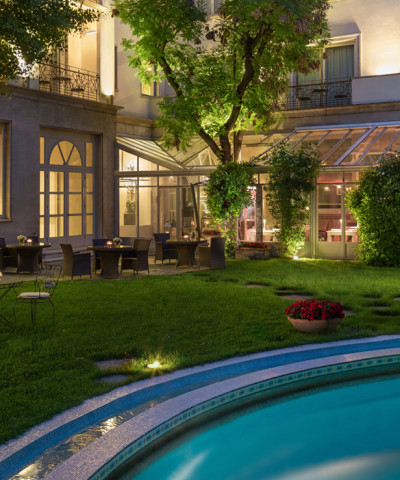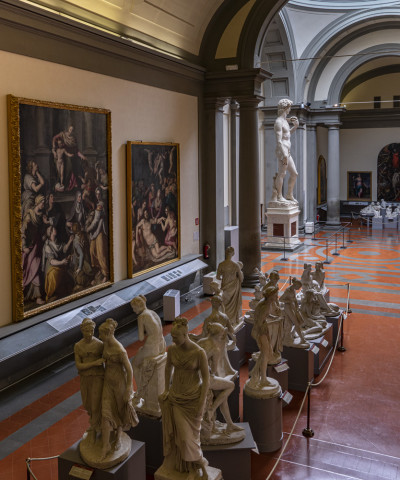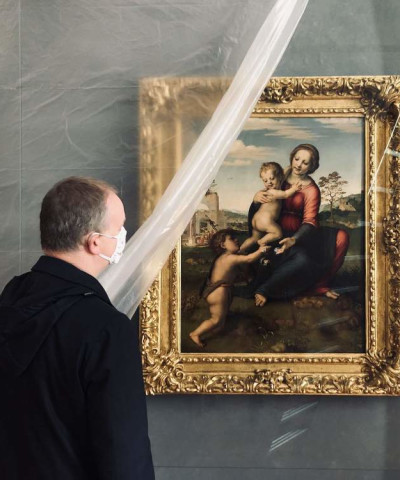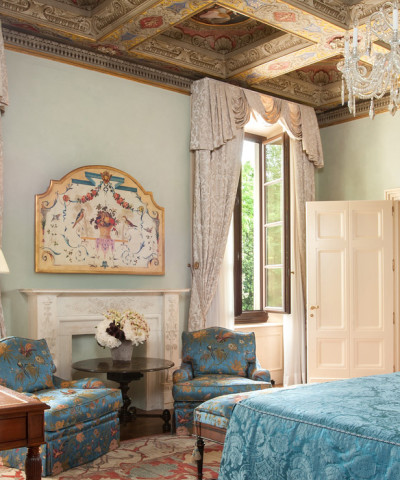The Uffizi’s new rooms
Dialogues between Leonardo, Michelangelo and Raphael
Genius and beauty side by side, in a dimension that goes beyond time and designed to recreate Florence’s magic moment in the sixteenth-century. This summer, the Uffizi Gallery unveiled the new rooms devoted to Michelangelo, Raphael and Leonardo da Vinci. The artists’ names reflect the importance of such an achievement. Being able to look at their works next to each other, lit by the morning light filtering in from above, is a truly vertigo-inducing experience. Our guide is the man who worked hard to have all this beauty gathered together in the West Wing of one of the world’s greatest museums, director Eike Schmidt. “Now Leonardo’s works are positioned in Room 35 of the Uffizi’s West Wing- the director explains- out of respect for the Gallery’s chronological narrative, according to which Leonardo precedes Michelangelo and Raphael.”
Leonardo’s earliest works, created in the years he trained at Verrocchio’s workshop and now kept at the Uffizi Gallery, were designed for religious buildings, which is the reason why the new room’s walls have been painted light grey by using a spatula effect, which was used on church walls in Leonardo’s days. To the left of the entrance is the Baptism of Christ, created for the Church of San Salvi in 1475-78, in the years when the artist still worked with Verrocchio. The work was completed by three artists: Verrocchio, Leonardo and an untalented pupil of Verrocchio. Leonardo painted the very elegant angel in profile who is holding Jesus’s clothes. According to Vasari, Verrocchio was so overwhelmed by Leonardo’s talent that he never painted again.
Hanging on the opposite wall is the Annunciation, from the Church of Monteoliveto. On display in the middle of the room is The Adoration of the Magi, which was left unfinished when Leonardo went to Milan in 1482. The altar-piece is like a big notebook page, offering insight into Leonardo’s creative process.
“The new display cases have special glass surfaces which prevent light from refracting on them- Schmidt says- allowing us to admire the paintings as never before. We can take in the expressions on every single face and the perfection with which every living being in the paintings, even the minutest one, was portrayed.”
The beautiful new Room 35, with the soft light caressing the angel’s draping that caused Verrocchio to be envious of Leonardo, makes us linger a few minutes longer.
But the rooms that follow are in no way less exciting than the first: in Room 41, the works by Raphael and Michelangelo are gathered together. The two artists worked both in Florence in the years between 1504 and 1508. The new rearrangement highlights the roles of private customers, such as the Doni and Nasi families, for whom Raphael painted the Madonna of the Goldfinch. This masterwork is juxtaposed with the Doni Tondo by Michelangelo, which was painted around the same period of time. Showcased in the same room are also the two portraits of Maddalena and Agnolo Doni by Raphael, previously kept at Palazzo Pitti, thus, offering a deeper understanding of the historical connection between works created for the same customer and originally housed in the same palazzo.
“This new manner of display prevents us from decontextualizing the works of art. In particular, by gathering Raphael’s works in the same room, we can observe the quick progress made by the artist in the pictorial art- the director says-. The portraits of Guidobaldo da Montefeltro and Elisabetta Gonzaga, in a frontal pose, with a completely expressionless face, appear to be more immature as compared with the portraits of Agnolo and Maddalena Doni, although they were all painted in a short period of time. The Donis, portrayed in a slightly oblique position in order for their eyes to meet those of the observer, express also the bond that exists between them, through their converging figures. Furthermore, interesting details of the Doni portraits emerge from the comparison between the works: for instance, Agnolo’s and Maddalena’s hands, folded in their lap, provide new elements for an in-depth reading of the work.”






